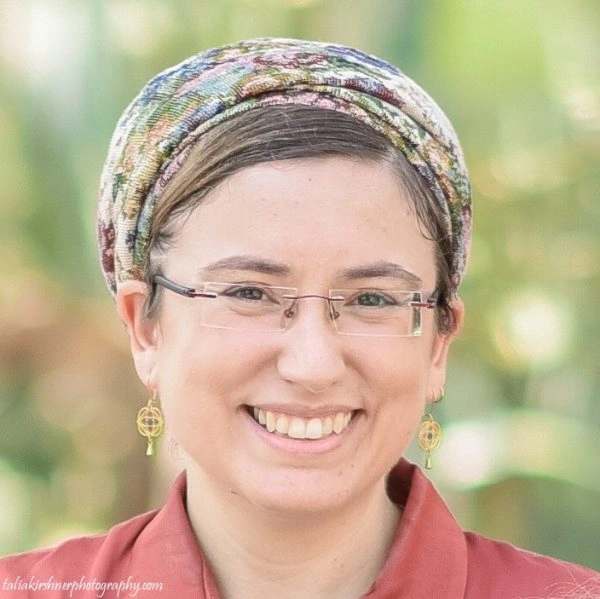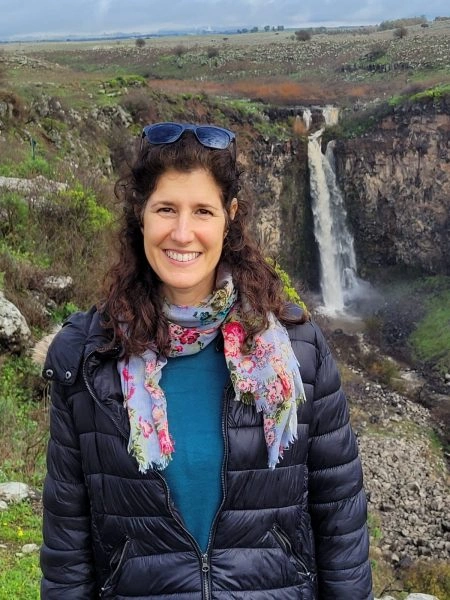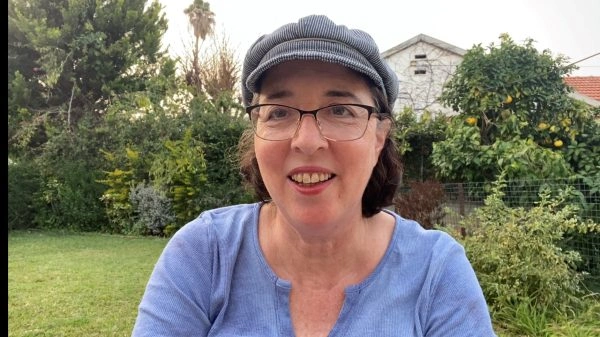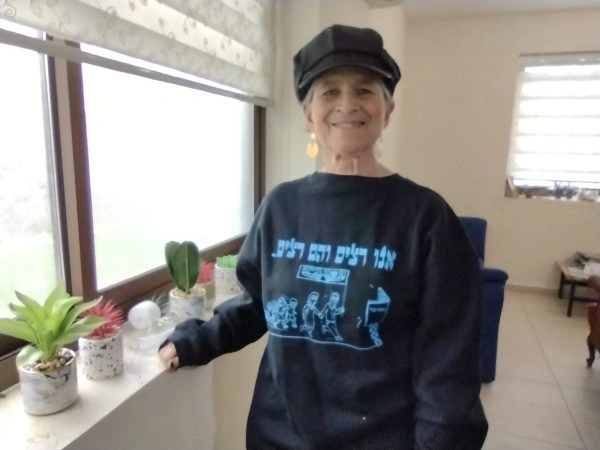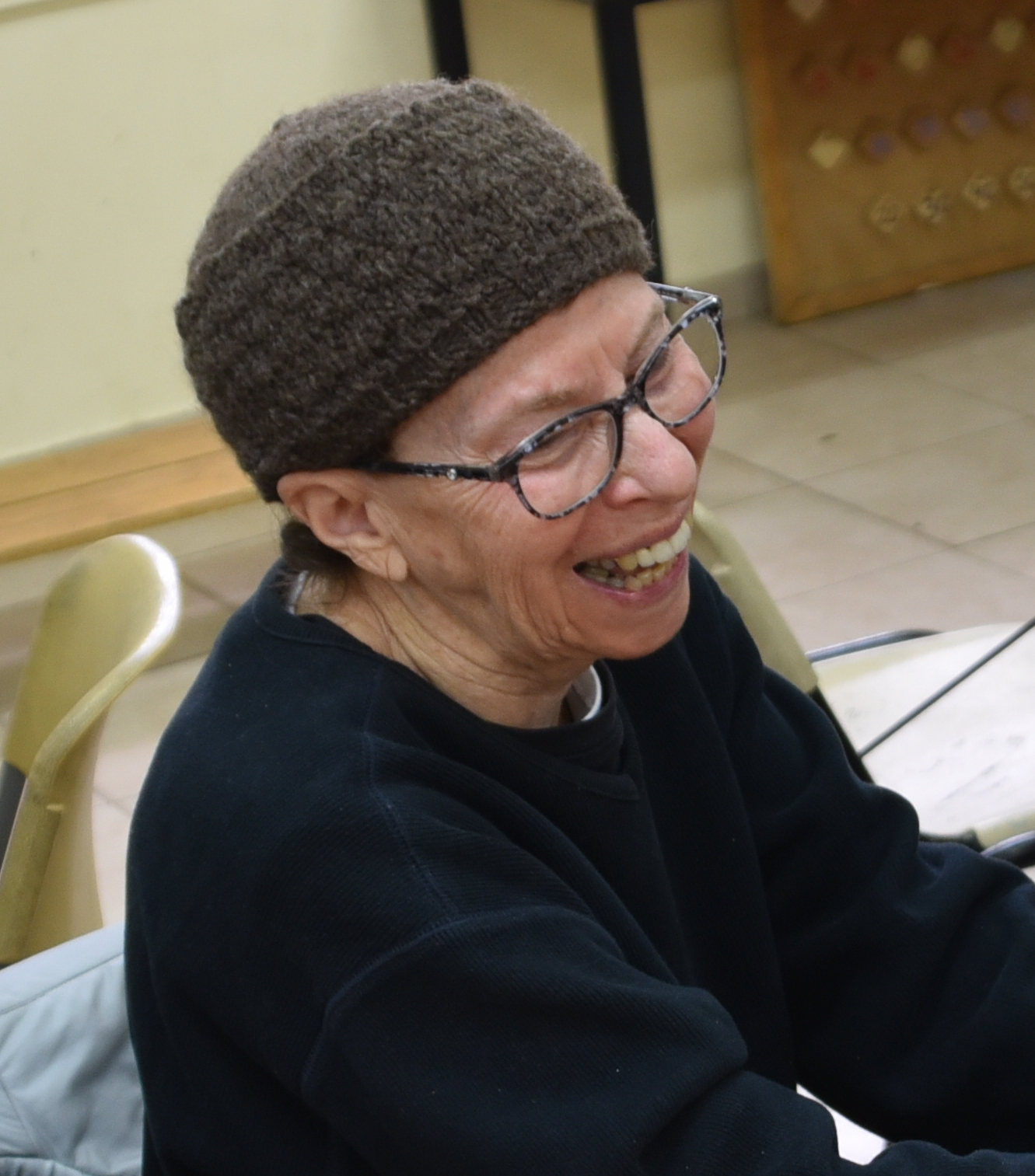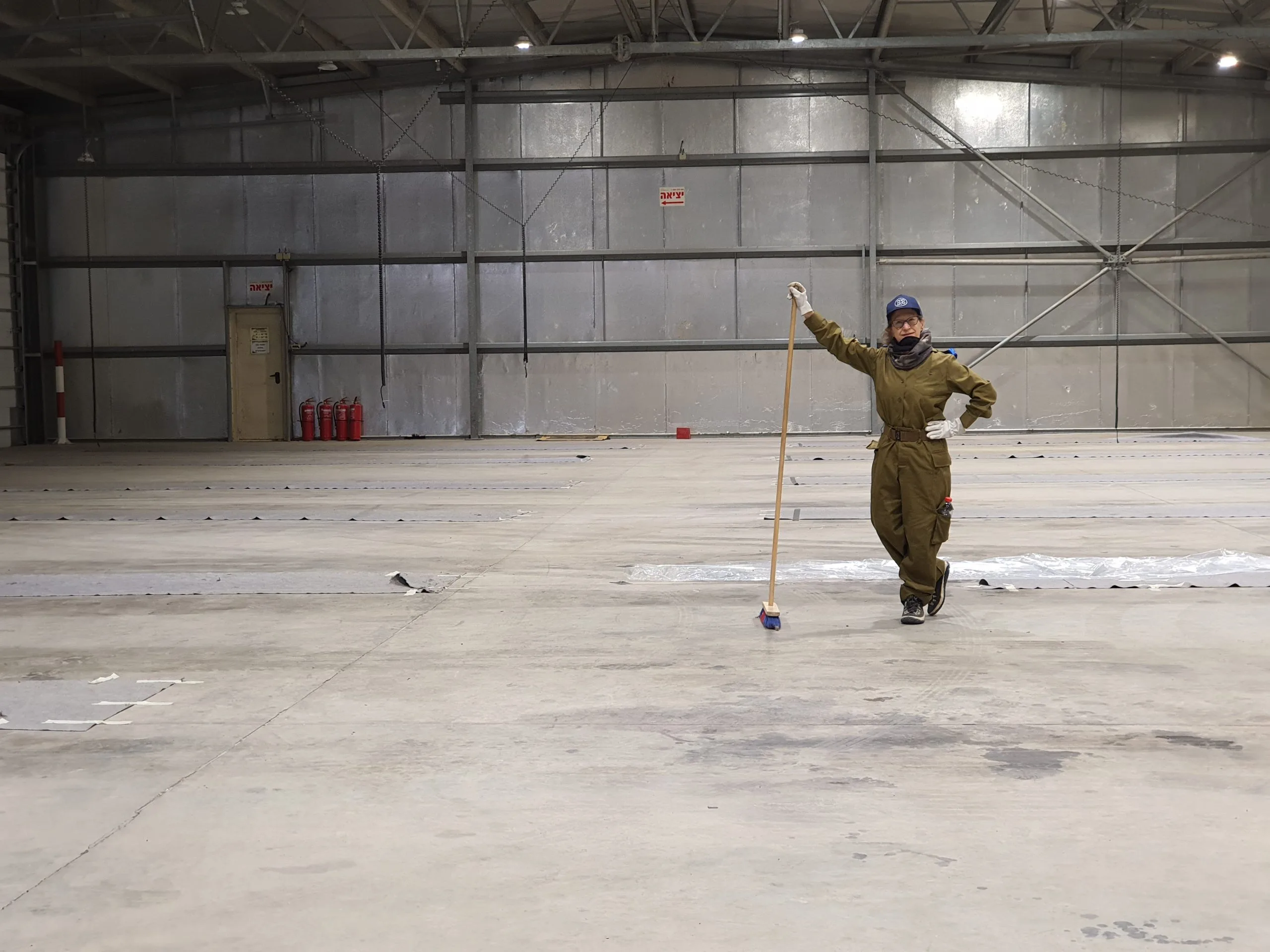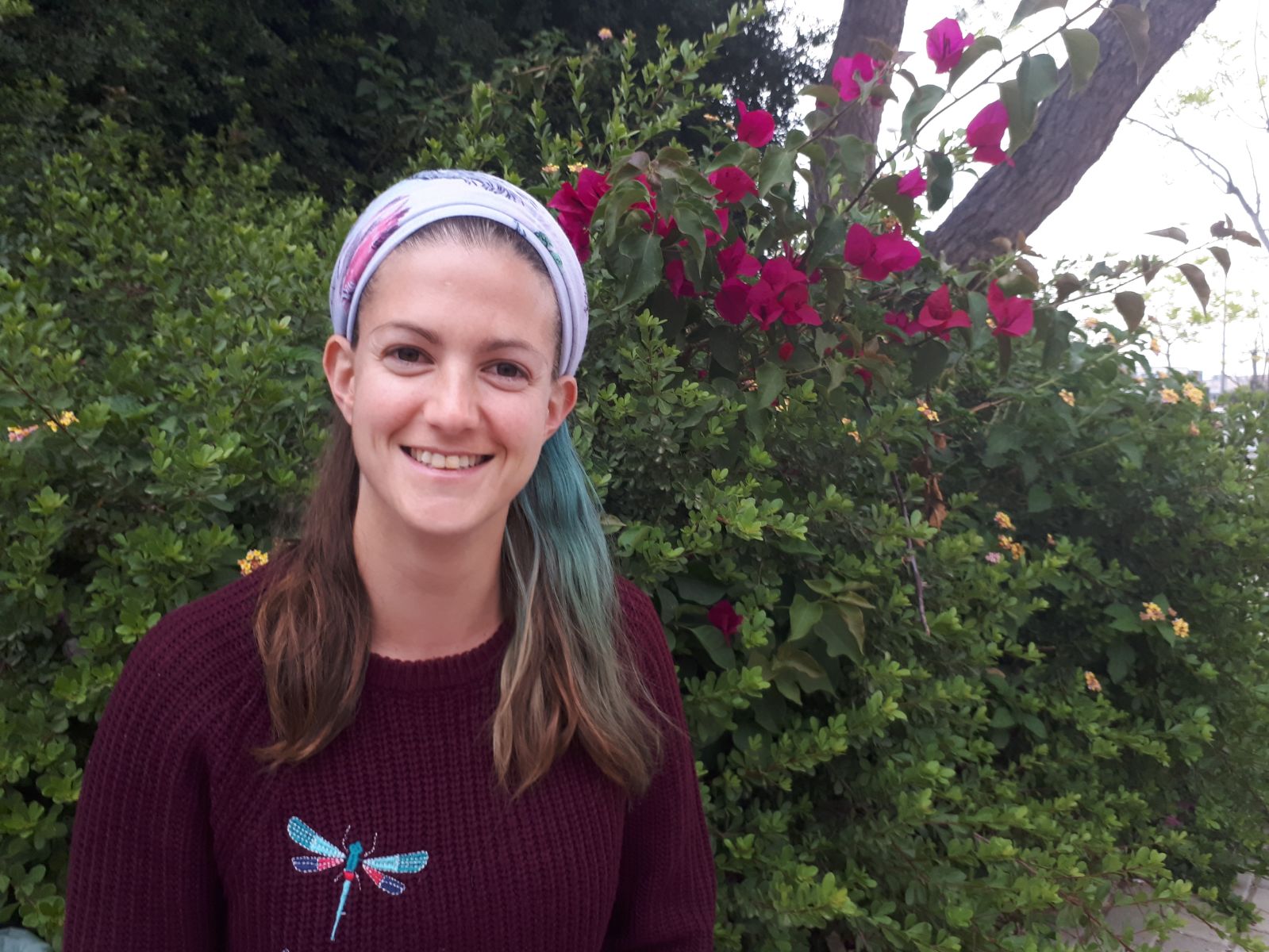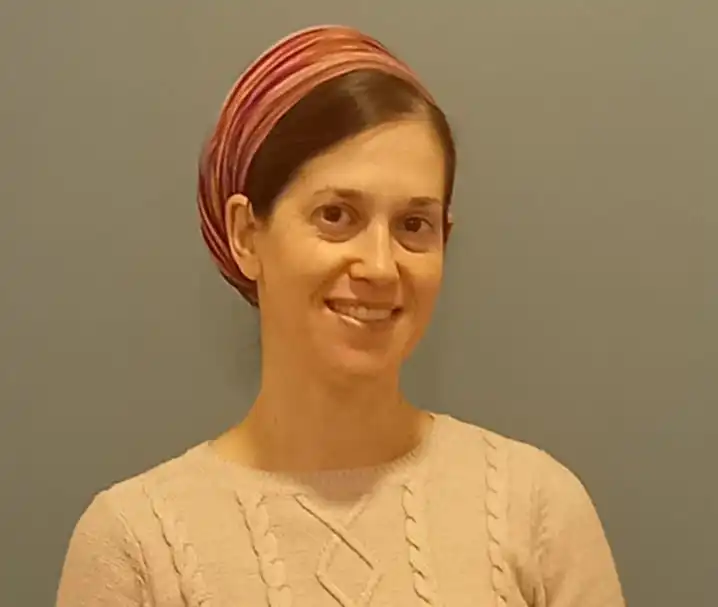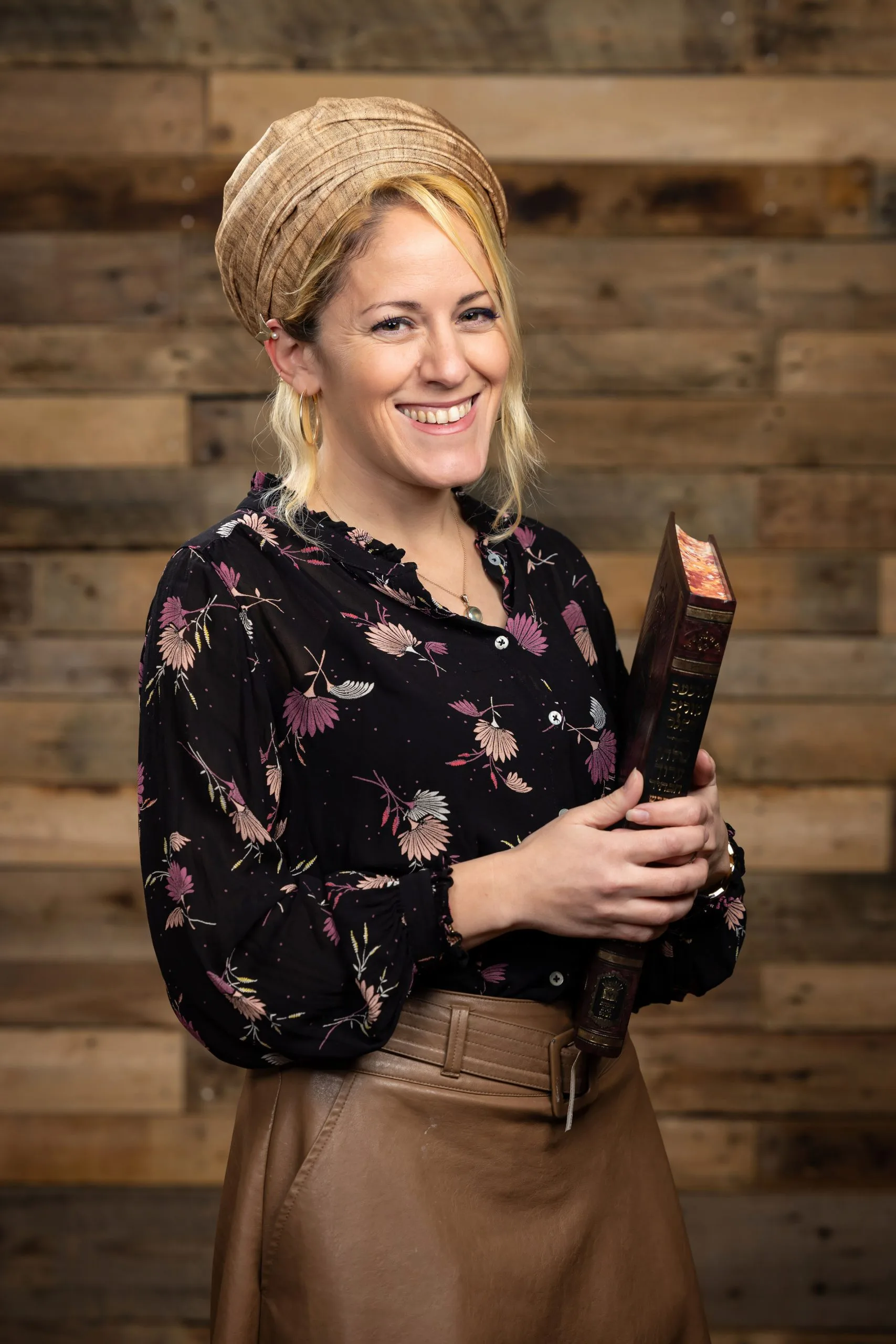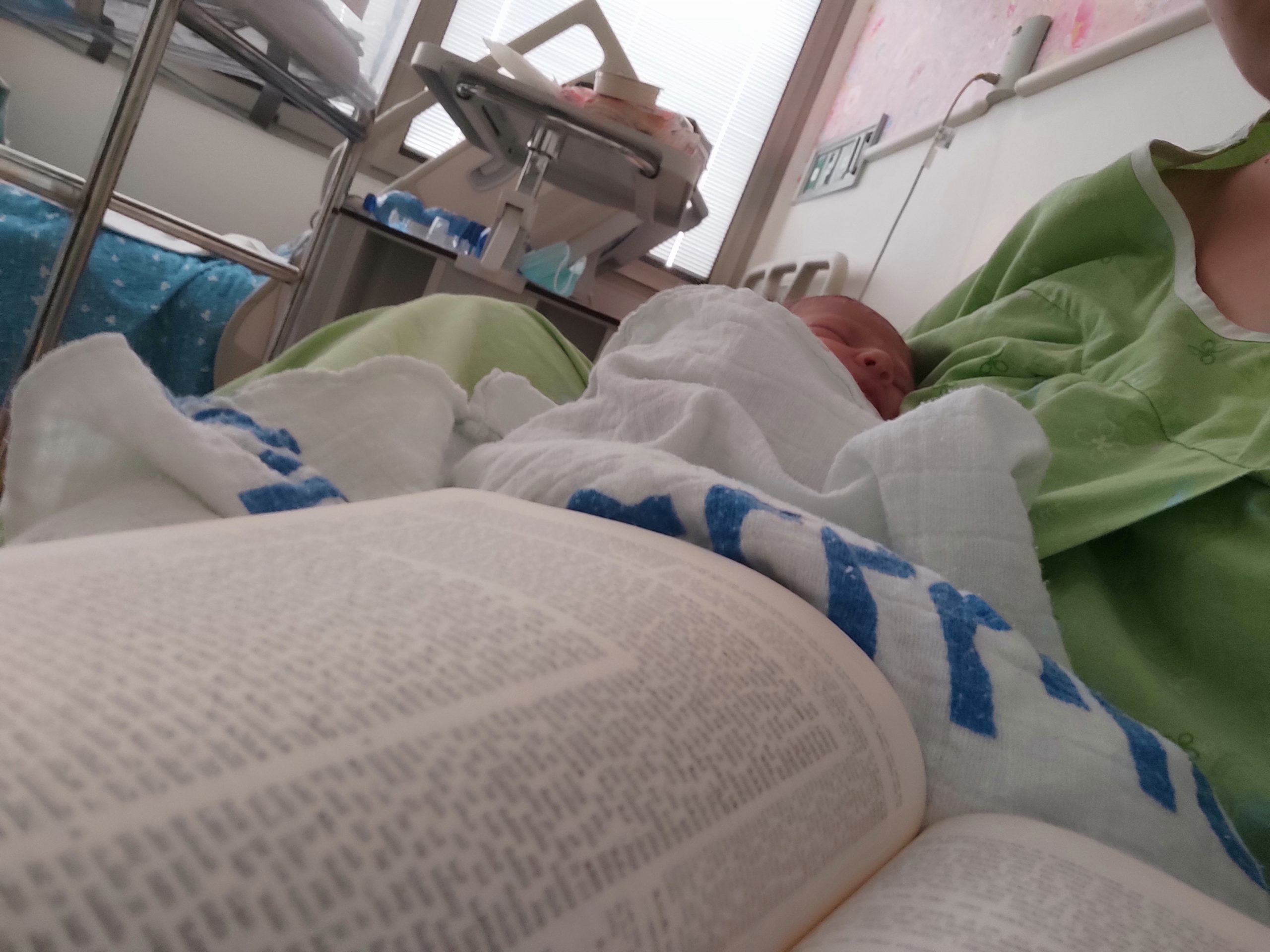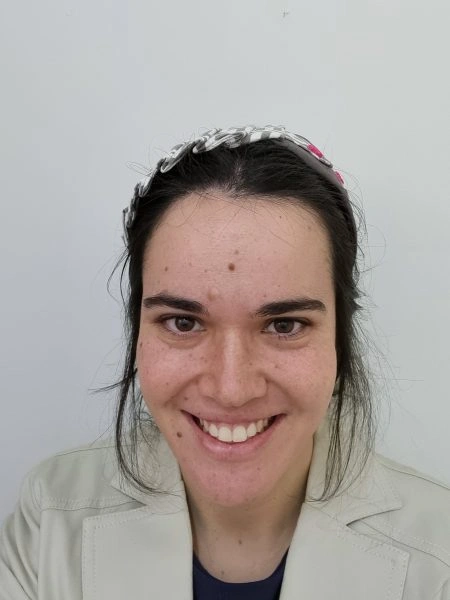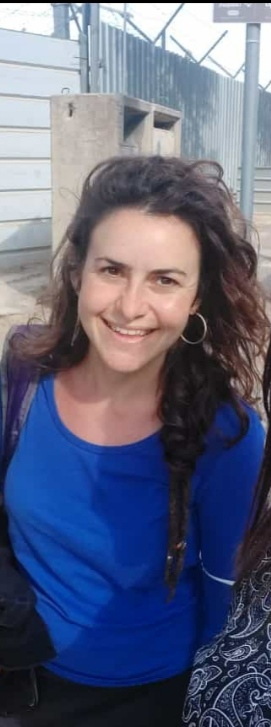שבועות טו
וְכֵן תַּעֲשׂוּ״ – לְדוֹרוֹת.
and so shall you do” (Exodus 25:9). The final words: “And so shall you do,” are superfluous and serve to teach: As was done in the Tabernacle, so shall you do in future generations.
מֵתִיב רָבָא: כׇּל הַכֵּלִים שֶׁעָשָׂה מֹשֶׁה – מְשִׁיחָתָן מְקַדַּשְׁתָּן, מִכָּאן וְאֵילָךְ – עֲבוֹדָתָן מְחַנַּכְתָּן. וְאַמַּאי? וְנֵימָא ״וְכֵן תַּעֲשׂוּ״ – לְדוֹרוֹת!
Rava raises an objection from a baraita: With regard to all the sacred vessels that Moses fashioned, their anointment with oil consecrates them. From that point forward, in the generations after Moses, new vessels do not require anointment to be consecrated; rather, their use in the Temple service initiates them and renders them fit for use. Rava clarifies the objection: But why is this so? Let us say here as well that the phrase “and so shall you do” teaches that the same must be done in future generations.
שָׁאנֵי הָתָם, דְּאָמַר קְרָא: ״וַיִּמְשָׁחֵם וַיְקַדֵּשׁ אֹתָם״ – אוֹתָם בִּמְשִׁיחָה, וְלֹא לְדוֹרוֹת בִּמְשִׁיחָה.
The Gemara answers: It is different there, as the verse states with regard to the Tabernacle and its vessels: “And he anointed them and consecrated them” (Numbers 7:1). This teaches that it is only “them,” the vessels fashioned by Moses, that are consecrated through anointment, but vessels fashioned in later generations are not consecrated through anointment.
אֵימָא אוֹתָם – בִּמְשִׁיחָה, לְדוֹרוֹת – אוֹ בִּמְשִׁיחָה אוֹ בַּעֲבוֹדָה! אָמַר רַב פָּפָּא, אָמַר קְרָא: ״אֲשֶׁר יְשָׁרְתוּ בָם בַּקֹּדֶשׁ״, תְּלָאָן הַכָּתוּב בְּשֵׁירוּת.
The Gemara asks: Why not say: “Them,” the vessels made by Moses, he consecrated specifically through anointment, but vessels made in future generations are consecrated either through anointment or through their initial service? Rav Pappa said: The verse states: “And they shall take all the service vessels, with which they will serve in the Sanctuary” (Numbers 4:12). The future tense “they will serve,” indicates that the verse is referring to future vessels, and the verse makes them dependent upon service, teaching that in future generations vessels will be consecrated through their initial service.
הַשְׁתָּא דִּכְתַב רַחֲמָנָא ״אֲשֶׁר יְשָׁרְתוּ״, ״אוֹתָם״ לְמָה לִי? אִי לָא כְּתַב רַחֲמָנָא ״אוֹתָם״, הֲוָה אָמֵינָא: הָנֵי הוּא דְּבִמְשִׁיחָה, לְדוֹרוֹת – בִּמְשִׁיחָה וּבַעֲבוֹדָה, דְּהָא כְּתִב ״וְכֵן תַּעֲשׂוּ״; מִיעֵט רַחֲמָנָא ״אוֹתָם״ – אוֹתָם בִּמְשִׁיחָה, וְלֹא לְדוֹרוֹת בִּמְשִׁיחָה.
The Gemara asks: Now that the Merciful One has written “with which they will serve,” why do I need the restrictive term “them”? The Gemara answers: Had the Merciful One not written “them,” I would say that they, the vessels made by Moses, were consecrated through anointment alone, but vessels made in later generations must be consecrated both through anointment and through service, as the Torah wrote: “And so shall you do,” referring to future generations. Therefore, the Merciful One excluded future vessels from anointment by stating “them,” teaching that it is only them that were consecrated through anointment, but in later generations they are not consecrated through anointment.
וּבִשְׁתֵּי תּוֹדוֹת. תָּנָא: שְׁתֵּי תּוֹדוֹת שֶׁאָמְרוּ – בְּלַחְמָן וְלֹא בִּבְשָׂרָן. מְנָהָנֵי מִילֵּי? אָמַר רַב חִסְדָּא, דְּאָמַר קְרָא: ״וָאַעֲמִידָה שְׁתֵּי תוֹדֹת גְּדוֹלֹת וְתַהֲלֻכֹת לַיָּמִין מֵעַל לַחוֹמָה״.
§ The mishna teaches: And with two thanks-offerings. A tanna taught in a baraita: And with regard to the two thanks-offerings that are mentioned here, the reference is to their loaves, but not to their flesh. An animal thanks-offering is accompanied by forty loaves of bread that are brought as a meal-offering. Ten loaves are leavened, and the remainder is comprised of ten each of three types of unleavened bread. The Gemara asks: From where are these matters derived? Rav Ḥisda said: As the verse states with regard to the consecration of the wall of Jerusalem in the days of Ezra: “And I placed two large thanks-offerings, and we went in procession to the right upon the wall” (Nehemiah 12:31).
מַאי ״גְּדוֹלוֹת״? אִילֵּימָא מִמִּין גָּדוֹל מַמָּשׁ, נֵימָא ״פָּרִים״! אֶלָּא גְּדוֹלוֹת בְּמִינָן.
The Gemara clarifies the meaning of this verse: What is meant by “large”? If we say that the animals of the thanks-offering were literally from a large species, i.e., oxen, rather than from a small species, i.e., sheep, let the verse state that they were oxen. Rather, let us say that he took animals from among the largest and the finest quality of their species.
מִי אִיכָּא חֲשִׁיבוּתָא קַמֵּי שְׁמַיָּא? וְהָתַנְיָא: נֶאֱמַר בְּעוֹלַת בְּהֵמָה ״אִשֵּׁה רֵיחַ נִיחֹחַ״, בְּעוֹלַת הָעוֹף ״אִשֵּׁה רֵיחַ נִיחֹחַ״, בְּמִנְחָה ״אִשֵּׁה רֵיחַ נִיחֹחַ״; מְלַמֵּד שֶׁאֶחָד הַמַּרְבֶּה וְאֶחָד הַמַּמְעִיט, וּבִלְבַד שֶׁיְּכַוֵּין אֶת לִבּוֹ לְאָבִיו שֶׁבַּשָּׁמַיִם!
The Gemara challenges this: Is the size of the offering of any importance before Heaven? But isn’t it taught in a mishna (Menaḥot 110a): It is stated with regard to an animal burnt-offering: “A fire offering, a pleasing aroma” (Leviticus 1:9), and it is also stated with regard to a bird burnt-offering: “A fire offering, a pleasing aroma” (Leviticus 1:17), and it is also stated with regard to a meal-offering: “A fire offering, a pleasing aroma” (Leviticus 2:2). The same term is used in all three cases even though the three offerings are of different value. This teaches that one who brings a substantial sacrifice and one who brings a modest sacrifice have equal merit, and both offerings are accepted as having a pleasing aroma, provided that one directs his heart to his Father in Heaven.
אֶלָּא גְּדוֹלָה שֶׁבַּתּוֹדָה, וּמַאי נִיהוּ – חָמֵץ. דִּתְנַן: הַתּוֹדָה הָיְתָה בָּאָה מִן חָמֵשׁ סְאִין יְרוּשַׁלְמִיּוֹת, שֶׁהֵן שֵׁשׁ מִדְבָּרִיּוֹת, שֶׁהֵן שְׁתֵּי אֵיפוֹת; וְהָאֵיפָה שָׁלֹשׁ סְאִין, עֶשְׂרִים עִשָּׂרוֹן – עֲשָׂרָה לֶחָמֵץ וַעֲשָׂרָה לַמַּצָּה. וּבַמַּצָּה שְׁלֹשָׁה מִינִין: חַלּוֹת, רְקִיקִין וּרְבוּכָה.
Rather, let us say that “large thanks-offerings” means the larger element in the thanks-offering loaves. And what is that? The leavened loaves, as we learned in a mishna (Menaḥot 76b): The meal part of the thanks-offering came from five Jerusalem se’a of flour, which are equivalent to six wilderness se’a. The se’a referred to in the Bible when the Jewish people were in the wilderness is smaller than the se’a used later in Jerusalem. This is equivalent to two ephahs, each ephah being three wilderness se’a. These two ephahs are twenty measures of a tenth of an ephah. Ten of these tenths were used to make leavened loaves and ten of these tenths were used to make unleavened loaves. And the unleavened loaves were of three types: Loaves of matza, wafers, and measures of flour mixed with water and oil. Accordingly, the leavened loaves were three times the size of the unleavened ones, and it was the leavened loaves that were used to consecrate additions to the city.
אָמַר רָמֵי בַּר חָמָא: אֵין הָעֲזָרָה מִתְקַדֶּשֶׁת, אֶלָּא בִּשְׁיָרֵי מִנְחָה. מַאי טַעְמָא? כִּירוּשָׁלַיִם; מָה יְרוּשָׁלַיִם – דָּבָר הַנֶּאֱכָל בָּהּ מְקַדְּשָׁהּ, אַף עֲזָרָה – דָּבָר הַנֶּאֱכָל בָּהּ מְקַדְּשָׁהּ.
Rami bar Ḥama says: One can infer from this baraita that the Temple courtyard is consecrated only with the remainder of the meal-offering, and not by the loaves of a thanks-offering. The remainder of the meal-offering is the part left over after a handful of it and its frankincense have been sacrificed on the altar; this remainder is eaten by a priest. What is the reason for this? The consecration of the Temple courtyard is like the consecration of Jerusalem. Just as with regard to Jerusalem, an item that is eaten specifically in it, i.e., the loaves of a thanks-offering, which are eaten anywhere in the city, consecrates the city, so too, with regard to the Temple courtyard, an item that is eaten specifically in it, i.e., the remainder of the meal-offering, consecrates the courtyard.
אַטּוּ לַחְמֵי תוֹדָה, בַּעֲזָרָה מִי לָא מִתְאַכְלִי?! אֶלָּא כִּירוּשָׁלַיִם – מָה יְרוּשָׁלַיִם דָּבָר הַנֶּאֱכָל בָּהּ וְיוֹצֵא מִמֶּנָּה נִפְסָל, אַף עֲזָרָה דָּבָר הַנֶּאֱכָל בָּהּ וְהַיּוֹצֵא מִמֶּנָּה נִפְסָל.
The Gemara asks: Is that to say that the loaves of a thanks-offering are not eaten in the Temple courtyard? Rather, the comparison should be drawn as follows: The consecration of the Temple courtyard is like the consecration of Jerusalem. Just as Jerusalem is consecrated with the loaves of a thanks-offering, which is an item that is eaten inside the city, and which, if it emerges from there, is disqualified, so too, the Temple courtyard is consecrated with an item that is eaten inside the courtyard, and which, if it emerges from there, is disqualified. This item is the remainder of a meal-offering, which can be eaten only by a priest and only in the Temple courtyard.
אִי מָה לְהַלָּן חָמֵץ, אַף כָּאן חָמֵץ?! וְתִסְבְּרַהּ? מִנְחַת חָמֵץ מִי אִיכָּא?!
The Gemara asks: If the consecration of the Temple courtyard is derived from the consecration of Jerusalem, let us say as follows: Just as there, with regard to the consecration of an addition made to Jerusalem, the loaves used in the ceremony are leavened, so too here, with regard to the consecration of an addition made to the Temple courtyard, the remainder of the meal-offering should be leavened. The Gemara expresses surprise at this suggestion: And how can you understand this? Is there a leavened meal-offering? A meal-offering is always unleavened.
וְכִי תֵּימָא דְּמַחְמֵיץ לְהוּ לְשִׁירַיִם וּמְקַדֵּשׁ בְּהוּ – וְהָכְתִיב ״לֹא תֵאָפֶה חָמֵץ חֶלְקָם״, וְאָמַר רֵישׁ לָקִישׁ: אֲפִילּוּ חֶלְקָם לֹא תֵאָפֶה חָמֵץ!
And if you would say that one leavens the remainder of the meal-offering, which the priests partake of, and he consecrates the Temple courtyard with it, that too is difficult, as isn’t it written: “It shall not be baked leavened, for their portion I have given it to them” (Leviticus 6:10)? And Reish Lakish says in explanation of this verse: Even the priests’ portion shall not be baked leavened, as it is prohibited to bake even a portion of the meal-offering leavened.
אַלְּמָה לָא? אֶפְשָׁר דִּמְקַדֵּשׁ בִּשְׁתֵּי הַלֶּחֶם בָּעֲצֶרֶת! מִשּׁוּם דְּלָא אֶפְשָׁר.
The Gemara asks: Still, why not consecrate the Temple courtyard with a leavened meal-offering? It is possible to consecrate it with the two loaves of bread that are brought as a communal offering on the festival of Shavuot, which is a meal-offering that is leavened. The Gemara answers: Because actually it is not possible to do so.
הֵיכִי נֶיעְבֵּיד? נִבְנְיֵיהּ מֵאֶתְמוֹל וְנִיקַדְּשֵׁיהּ מֵאֶתְמוֹל? שְׁתֵּי הַלֶּחֶם בִּשְׁחִיטַת כְּבָשִׁים הוּא דְּקָדְשִׁי.
The Gemara explains why not. How could we do it? If we build the addition to the Temple courtyard on the eve of Shavuot and also consecrate it on the eve of the Festival, there is a difficulty, as the two loaves become consecrated as a meal-offering with the slaughter of the two lambs that are sacrificed together with them as peace-offerings, and this occurs on the Festival itself, not on the eve of the Festival.
נִבְנְיֵיהּ מֵאֶתְמוֹל, וְנִיקַדְּשֵׁיהּ הָאִידָּנָא? בָּעֵינַן קִידּוּשׁ בִּשְׁעַת הַבִּנְיָן.
If we build the addition to the Temple courtyard on the eve of the Shavuot festival, but consecrate it only now, on the Festival, this too is difficult, as we require consecration at the time of the completion of the building.
נִבְנְיֵיהּ בְּיוֹם טוֹב וּנְקַדְּשֵׁיהּ בְּיוֹם טוֹב? אֵין בִּנְיַן מִקְדָּשׁ דּוֹחֶה יוֹם טוֹב.
If we build it on the Festival and consecrate it on the Festival, this also cannot be, as the building of the Temple does not override the Festival.
נִשְׁבְּקֵהּ לְבָתַר הָכִי, וְנִבְנְיֵיהּ וְנִיקַדְּשֵׁיהּ? אִיפְּסִילָא לֵיהּ בְּלִינָה.
If we leave the two loaves until after the Festival and build the addition to the Temple courtyard on the day after the Festival, and consecrate it by eating the two loaves on that day, this is difficult as well, as the two loaves were already disqualified by virtue of being left overnight after the Festival.
נִבְנְיֵיהּ מִמַּעֲלֵי יוֹמָא וּנְשַׁיַּיר בֵּיהּ פּוּרְתָּא – דְּעַד דְּקָדֵישׁ יוֹמָא לְאַלְתַּר נִגְמְרֵיהּ וְנִיקַדְּשֵׁיהּ? אֵין בִּנְיַן בֵּית הַמִּקְדָּשׁ בַּלַּיְלָה; דְּאָמַר אַבָּיֵי: מִנַּיִן שֶׁאֵין בִּנְיַן בֵּית הַמִּקְדָּשׁ בַּלַּיְלָה? שֶׁנֶּאֱמַר: ״וּבְיוֹם הָקִים אֶת הַמִּשְׁכָּן״ – בְּיוֹם מְקִימוֹ, בַּלַּיְלָה אֵין מְקִימוֹ. הִלְכָּךְ לָא אֶפְשָׁר.
If we build the addition to the Temple courtyard on the eve of the Festival and leave a little unbuilt until after the Festival, and as soon as the day is over and the Festival is finished, we immediately finish building the addition and consecrate it with the two loaves before they become disqualified, this too is impossible, as the building of the Temple cannot take place at night. This is as Abaye says: From where is it derived that the building of the Temple cannot take place at night? As it is stated: “And on the day that the Tabernacle was erected” (Numbers 9:15), from which it can be derived: One may erect it during the day, but one may not erect it at night. Therefore, it is impossible to consecrate the Temple courtyard with the two loaves; it must be done with the remainder of an unleavened meal-offering.
וּבְשִׁיר. תָּנוּ רַבָּנַן: שִׁיר שֶׁל תּוֹדָה – בְּכִנּוֹרוֹת וּבִנְבָלִים וּבְצֶלְצֶלִים עַל כׇּל פִּינָּה וּפִינָּה וְעַל כׇּל אֶבֶן גְּדוֹלָה שֶׁבִּירוּשָׁלַיִם, וְאוֹמֵר ״אֲרוֹמִמְךָ ה׳ כִּי דִלִּיתָנִי וְגוֹ׳״, וְשִׁיר שֶׁל פְּגָעִים, וְיֵשׁ אוֹמְרִין שִׁיר שֶׁל נְגָעִים.
§ The mishna teaches concerning the consecration of an addition to the city of Jerusalem or the Temple courtyard: And with a song. The Sages taught in a baraita: They sang the song of thanksgiving, i.e., Psalms, chapter 100, which begins: “A psalm of thanksgiving,” accompanied by harps, lyres, and cymbals, at every corner and upon every large stone in Jerusalem. And they also recited Psalms, chapter 30, which begins: “I will extol You, O Lord, for You have lifted me up,” and the song of evil spirits, i.e., Psalms, chapter 91, which begins: “He that dwells in the secret place of the Most High.” And some say that this psalm is called the song of plagues.
מַאן דְּאָמַר דִּנְגָעִים – דִּכְתִיב: ״וְנֶגַע לֹא יִקְרַב בְּאׇהֳלֶךָ״, וּמַאן דְּאָמַר פְּגָעִים – דִּכְתִיב: ״יִפֹּל מִצִּדְּךָ אֶלֶף״.
The reason of the one who says that it is called the song of plagues is that it is written: “Nor shall any plague come near your dwelling” (Psalms 91:10). And the reason of the one who says that it is called the song of evil spirits is that it is written: “A thousand shall fall at your side and ten thousand at your right hand; but it shall not come near you” (Psalms 91:7).
וְאוֹמֵר: ״יֹשֵׁב בְּסֵתֶר עֶלְיוֹן בְּצֵל שַׁדַּי יִתְלוֹנָן״ עַד ״כִּי אַתָּה ה׳ מַחְסִי עֶלְיוֹן שַׂמְתָּ מְעוֹנֶךָ״; וְחוֹזֵר וְאוֹמֵר: ״מִזְמוֹר לְדָוִד בְּבׇרְחוֹ מִפְּנֵי אַבְשָׁלוֹם בְּנוֹ, ה׳ מָה רַבּוּ צָרָי״, עַד ״לַה׳ הַיְשׁוּעָה עַל עַמְּךָ בִרְכָתֶךָ סֶּלָה״.
And they recited the psalm from the verse: “He that dwells in the secret place of the Most High shall abide in the shadow of the Almighty” (Psalms 91:1), until they completed the verse: “Because You, O Lord, are my refuge; You have made the most High Your habitation” (Psalms 91:9). And they would then recite Psalms, chapter 3, which begins: “A psalm of David, when he fled from Absalom his son. Lord, how many are my enemies become,” until they reached the verse: “Salvation belongs to the Lord; Your blessing be upon Your people. Sela” (Psalms 3:9), which is the end of that psalm.
רַבִּי יְהוֹשֻׁעַ בֶּן לֵוִי אָמַר לְהוּ לְהָנֵי קְרָאֵי, וְגָאנֵי. הֵיכִי עָבֵיד הָכִי? וְהָאָמַר רַבִּי יְהוֹשֻׁעַ בֶּן לֵוִי: אָסוּר לְהִתְרַפְּאוֹת בְּדִבְרֵי תּוֹרָה! לְהָגֵן שָׁאנֵי.
It is related that Rabbi Yehoshua ben Levi would recite these verses to protect him from evil spirits during the night and fall asleep while saying them. The Gemara asks: How could he do that? But doesn’t Rabbi Yehoshua ben Levi himself say: One is prohibited from healing himself with words of Torah? The Gemara answers: To protect oneself is different, as he recited these verses only to protect himself from evil spirits, and not to heal himself.
וְאֶלָּא כִּי אָמַר אָסוּר – דְּאִיכָּא מַכָּה? אִי דְּאִיכָּא מַכָּה אָסוּר, וְתוּ לָא?! וְהָתְנַן: הַלּוֹחֵשׁ עַל הַמַּכָּה, אֵין לוֹ חֵלֶק לָעוֹלָם הַבָּא! הָא אִיתְּמַר עֲלַהּ, אָמַר רַבִּי יוֹחָנָן: בְּרוֹקֵק שָׁנוּ; לְפִי שֶׁאֵין מַזְכִּירִין שֵׁם שָׁמַיִם עַל הָרְקִיקָה.
The Gemara challenges: But rather, when Rabbi Yehoshua ben Levi said that this is prohibited, he was referring to a situation where there is already a wound and one recites these verses in order to heal himself. But if there is already a wound and he recites these verses over it, is only this prohibited, and nothing more? But didn’t we learn in a mishna (Sanhedrin 90a), that one who whispers an incantation over a wound has no share in the World-to-Come? The Gemara answers: Wasn’t it stated with regard to that mishna that Rabbi Yoḥanan says: The mishna was taught with regard to one who spits into the wound and then whispers these verses. And the reason for the severity of this action is that the name of Heaven must not be mentioned in connection with spitting, as doing so is a show of contempt for God.
בֵּית דִּין מְהַלְּכִין וּשְׁתֵּי תּוֹדוֹת אַחֲרֵיהֶן וְכוּ׳. לְמֵימְרָא דְּבֵית דִּין קַמֵּי תּוֹדָה אָזְלִי?! וְהָכְתִיב: ״וַיֵּלֶךְ אַחֲרֵיהֶם הוֹשַׁעְיָה וַחֲצִי שָׂרֵי יְהוּדָה״! הָכִי קָאָמַר: בֵּית דִּין מְהַלְּכִין, וּשְׁתֵּי תּוֹדוֹת מְהַלְּכוֹת וּבֵית דִּין אַחֲרֵיהֶם.
§ The mishna teaches that as part of the consecration ceremony, the court would move forward, and two thanks-offerings would be brought after them, and all of the Jewish people would follow behind them. The Gemara asks: Is this to say that the members of the court walk in front of the thanks-offering? But isn’t it written in the verse from which this ceremony is derived: “And I placed two large thanks-offerings, and we went in procession to the right upon the wall, toward the dung gate; and after them went Hoshaiah, and half of the princes of Judah” (Nehemiah 12:31–32)? The Gemara answers: This is what the mishna is saying: The court moves forward. And how is this done? The two thanks-offerings move forward, and the court follows after them.
כֵּיצַד מְהַלְּכוֹת? רַבִּי חִיָּיא וְרַבִּי שִׁמְעוֹן בְּרַבִּי; חַד אָמַר: זוֹ כְּנֶגֶד זוֹ, וְחַד אָמַר: זוֹ אַחַר זוֹ. מַאן דְּאָמַר זוֹ כְּנֶגֶד זוֹ, ״הַפְּנִימִית״ – הָךְ דִּמְקָרְבָא לַחוֹמָה. מַאן דְּאָמַר זוֹ אַחַר זוֹ, ״הַפְּנִימִית״ – הָךְ דִּמְקָרְבָא לְבֵית דִּין.
The Gemara clarifies this point: How exactly did the two thanks-offerings move forward? Rabbi Ḥiyya and Rabbi Shimon, son of Rabbi Yehuda HaNasi, disagree about this. One Sage says: One thanks-offering alongside the other. And one Sage says: One behind the other. According to the one who says that the two offerings moved one alongside the other, the thanks-offering that the mishna refers to as the inner one is that which is closest to the wall. According to the one who says that the two offerings moved one behind the other, the thanks-offering that is called the inner one is that which is closest to the members of the court advancing behind the thanks-offerings.
תְּנַן: הַפְּנִימִית נֶאֱכֶלֶת וְהַחִיצוֹנָה נִשְׂרֶפֶת. בִּשְׁלָמָא לְמַאן דְּאָמַר זוֹ אַחַר זוֹ, אַמְּטוּ לְהָכִי פְּנִימִית נֶאֱכֶלֶת – מִשּׁוּם דְּאָתְיָא חִיצוֹנָה קַמַּהּ, וְקַדְּשָׁהּ לַהּ. אֶלָּא לְמַאן דְּאָמַר זוֹ כְּנֶגֶד זוֹ, תַּרְוַיְיהוּ בַּהֲדֵי הֲדָדֵי קָא מְיקַדְּשִׁי!
The Gemara analyzes these two opinions: We learned in the mishna: When they would reach the end of the place that they desired to consecrate, the inner thanks-offering would be eaten and the outer one would be burned. Granted, according to the one who says that the two thanks-offerings moved forward one behind the other, and that the inner one is the one that was in the rear, it is due to this that the inner one is eaten, because the outer one came before it and consecrated the additional area, so that it is now a sanctified place fit for the eating of the thanks-offering loaves. But according to the one who says that the two thanks-offerings moved forward one alongside the other, the two of them together consecrated the additional area. Why, then, is the inner one eaten and the outer one burned?
וְלִיטַעְמָיךְ, לְמַאן דְּאָמַר זוֹ אַחַר זוֹ, חֲדָא מִי מְיקַדְּשָׁא?! הָא ״כׇּל שֶׁלֹּא נַעֲשֵׂית בְּכׇל אֵלּוּ״ תְּנַן! וַאֲפִילּוּ לְמַאן דְּאָמַר ״בְּאַחַת מִכׇּל אֵלּוּ״, הָנֵי תַּרְוַיְיהוּ חֲדָא מִצְוָה הִיא!
The Gemara asks: And according to your reasoning, according to the one who says that the two offerings moved forward one behind the other, does one offering by itself consecrate the area? Didn’t we learn in the mishna that with regard to any addition that was not made with all these ceremonial procedures, the addition is not consecrated? And even according to the one who says (see 16a) that the correct reading of the mishna is: With regard to any addition that was not made with any one of all these ceremonial procedures, the addition is not consecrated, nevertheless, these two thanks-offerings are one mitzva, and one without the other would not consecrate the area.
אֶלָּא אָמַר רַבִּי יוֹחָנָן:
Rather, Rabbi Yoḥanan said:

